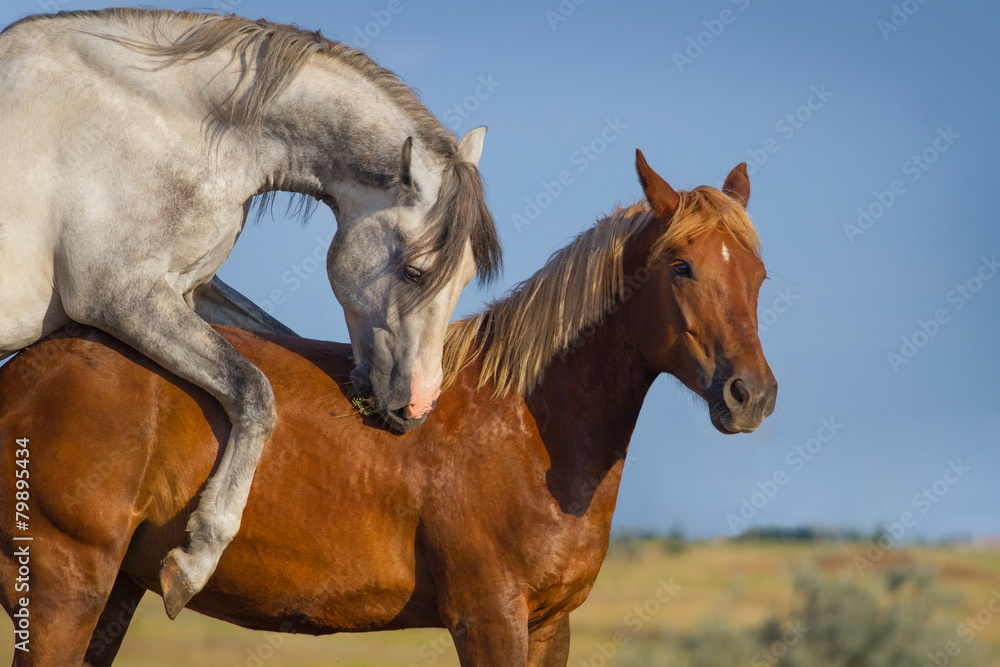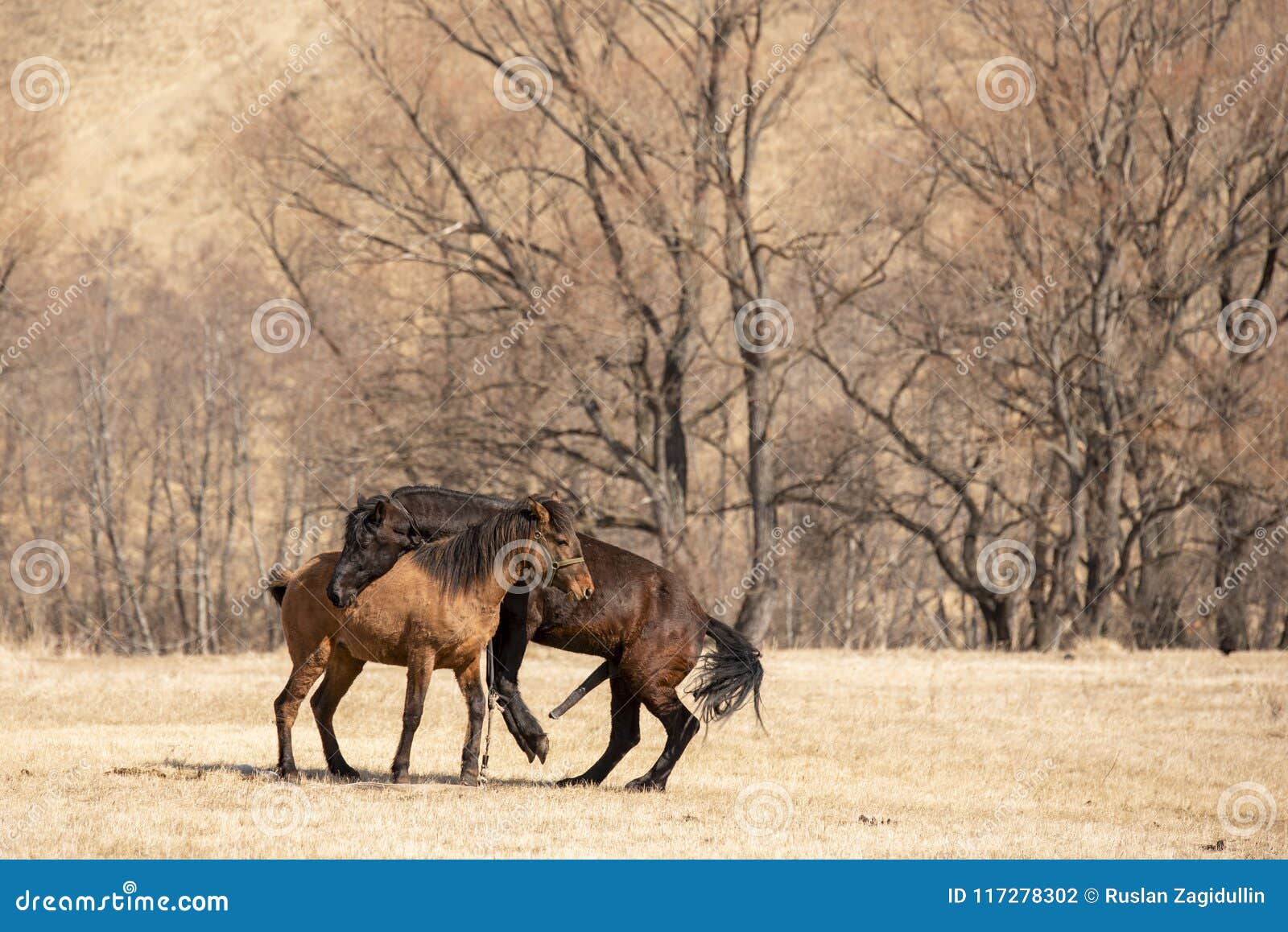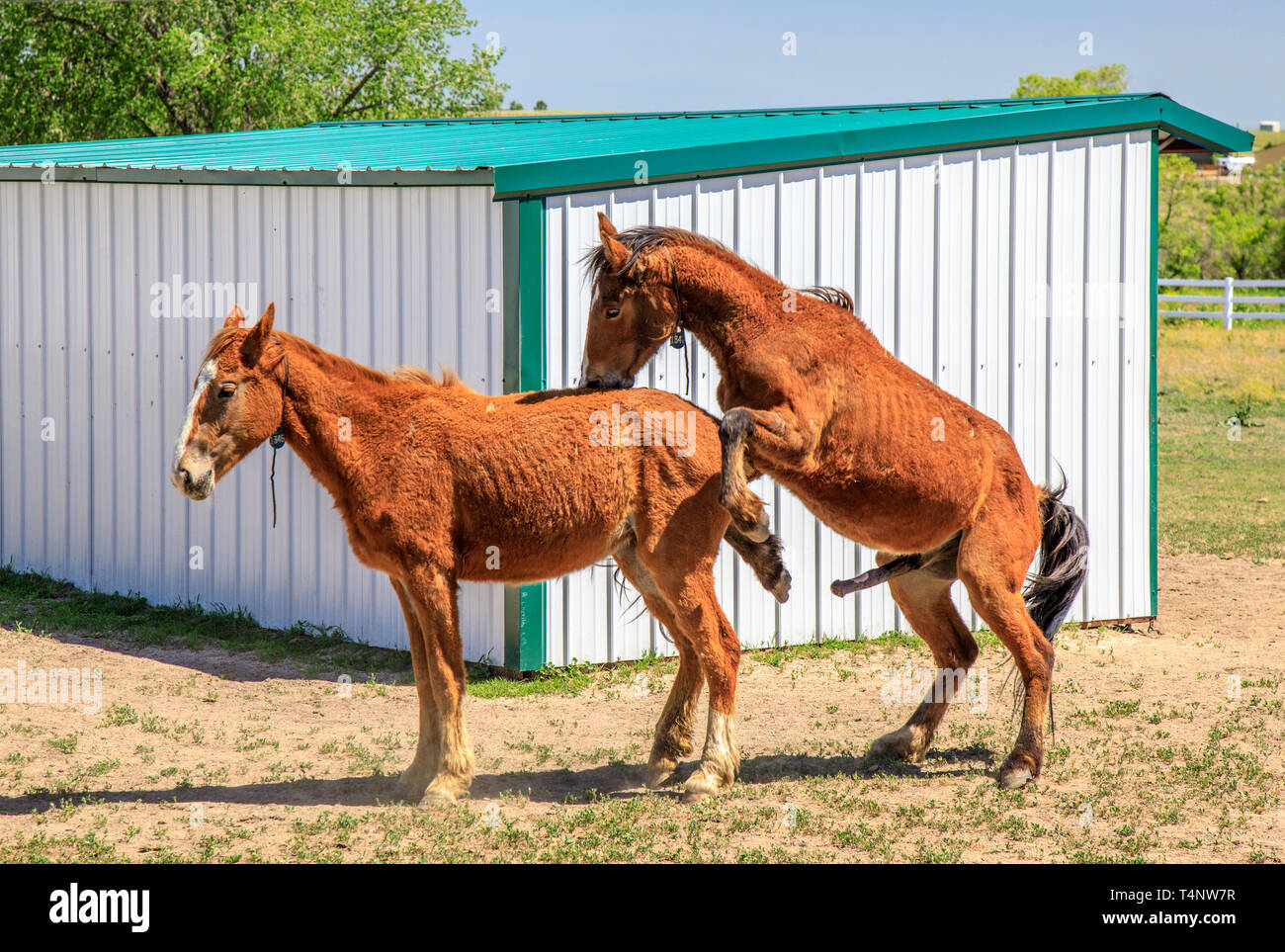Have you ever stopped to think about how horses, these grand and spirited creatures, bring new life into the world? It's a truly amazing part of their existence, and, you know, it’s a process that has kept their kind going for countless generations. For anyone who spends time around horses, whether you ride them, care for them, or just admire them from afar, getting a better sense of how they reproduce can be, well, quite interesting. This natural event is fundamental to their survival, after all, and it involves a whole lot more than you might first guess.
This natural process of horse mating, sometimes called horse breeding, is pretty central to how these magnificent animals continue their lineage. It’s a series of moments and behaviors that are, basically, all about making sure new foals arrive. From the very first subtle signs that a mare is ready, to the focused actions of a stallion, there's a delicate dance involved. It's a natural wonder, really, and something that has shaped horse populations for ages.
We're going to take a closer look at this fascinating subject. We'll explore the various parts of how horses come together to create offspring, from those initial greetings between a male and female horse, to the point where a new life begins. You'll get a better picture of what happens when horses mate, both when they are living freely and when people are helping manage the process. It's a topic that, honestly, holds a lot of intrigue for many folks who love horses.
Table of Contents
- What is Horse Mating, Really?
- How Do Horses Mate in the Wild?
- What Happens During Horse Mating?
- The Mare's Role - Understanding Heat and Receptivity
- The Stallion's Part in Horse Mating
- Horse Mating - Natural vs. Managed Approaches
- Are There Challenges in Horse Mating?
- Beyond Horse Mating - What Comes Next?
What is Horse Mating, Really?
When we talk about horse mating, we're really just talking about how horses make more horses. It's a completely natural part of their existence, and, well, it's absolutely necessary for them to keep their species going. Just like with most other creatures that have backbones, horses reproduce by bringing a male and a female together. This coming together allows for the male's reproductive cells to meet with the female's, which can then lead to a new little horse. It's a fundamental part of life for them, you know, and it's a process that has been happening for millions of years.
The whole event involves a sequence of different actions and reactions between the male horse, called a stallion, and the female horse, known as a mare. These actions are all aimed at one goal: to get the stallion's genetic material to the mare so that a new life can begin. This leads to the making of offspring, or what we commonly call foals. It's a biological marvel, really, and it's something that shows just how connected all living things are in their drive to continue their kind. It’s more or less a carefully orchestrated series of steps, even if it appears quite simple from a distance.
While it might seem straightforward, horse mating, in fact, can be a rather delicate operation. It often calls for a good bit of careful attention and a solid grasp of what's happening. For anyone involved with horses, whether you're a breeder or just someone who enjoys them, getting a handle on this process is pretty helpful. It gives you a deeper respect for these animals and their innate behaviors. So, it's not just a simple physical act; there's a lot of communication and timing involved, too, which we will get into.
How Do Horses Mate in the Wild?
When horses are living freely, out in their natural environments, the way they go about horse mating is, well, quite distinct. It’s all about instinct and the rhythms of nature. There are usually three clear stages to how they pair up in these open, grassy areas. First off, there's a time when the male and female horses start to show interest in each other. This often involves the stallion checking out the mare, maybe sniffing around her or making certain sounds. It’s a bit like a gentle introduction, you could say, where they assess each other.
The next part involves more direct communication. The stallion might begin to follow the mare, staying close by, perhaps making soft whinnies or grunts. The mare, in turn, will show if she's receptive through her body language. She might lift her tail, or stand still for him, indicating she’s open to his advances. This stage is really about building up to the main event, with both horses signaling their intentions and readiness. It's a natural conversation between them, you know, a very old dance.
Finally, if the mare is truly ready and willing, the actual physical act of horse mating takes place. This is when the stallion mounts the mare, and the transfer of genetic material happens. In the wild, this often happens multiple times over a few days while the mare is receptive. Then, the pair might separate, only to possibly come together again later if the mare cycles back into her receptive period. It’s a very natural flow, pretty much dictated by the mare's own body clock and the stallion's drive to reproduce.
What Happens During Horse Mating?
The actual event of horse mating, once the courtship has done its work, is a sequence of actions that are all about ensuring reproduction. When a mare is ready and shows she welcomes a stallion's approach, his actions become very focused. He might gently nudge her neck or the sides of her body with his nose, and sometimes he’ll make soft, rhythmic snorting sounds or little nickering noises. These actions are, in a way, his way of checking in with her and building a connection, making sure she's truly comfortable with him.
As the mare continues to show she's ready, perhaps by lifting her tail to the side or standing very still, the stallion will then prepare to mount her. This involves him moving into position behind her. The physical act itself is relatively quick, but it's the culmination of all the previous signals and interactions. During this brief time, the stallion transfers the necessary genetic material to the mare, setting the stage for a possible new life. It’s a rather straightforward biological function, but it’s preceded by a lot of nuanced communication.
After the physical connection, the stallion will dismount. The mare might then move away, or sometimes she'll stand quietly for a moment. The entire process, from the initial approach to the final dismount, is quite efficient, really. It’s all driven by instinct and the biological imperative to continue the species. For people who watch this, it’s a clear display of natural animal behavior, something that has been repeated countless times over history. It is, you know, a very ancient ritual.
The Mare's Role - Understanding Heat and Receptivity
A big part of successful horse mating depends on the mare being in what's called "heat," or estrus. This is a specific time in her reproductive cycle when her body is, you know, unusually open to a stallion's advances. It's a bit like a human menstrual cycle in some ways, where there are periods of receptivity. Typically, a mare will be in this receptive state for about five days. During these few days, her body is prepared for the possibility of becoming pregnant.
Recognizing when a mare is in heat is pretty important, especially for anyone involved in breeding horses. Mares often show clear signs. They might become more affectionate, or sometimes a little more restless. They might lift their tail more often, or even urinate in small amounts when a stallion is near. Some mares might also "wink" their vulva, which is a very clear physical sign of readiness. These are all signals to a stallion that she is ready to consider horse mating.
What's also interesting is that after a mare mates, she usually goes out of heat. But, she often cycles back into a receptive state roughly seven to fourteen days after that first mating. This means that if a pregnancy doesn't happen the first time, or if she's with a group of horses, she might become receptive again relatively soon. Understanding this cycle is, well, really key for anyone trying to manage horse reproduction. It’s all about timing, you see, and knowing what to look for in her behavior.
The Stallion's Part in Horse Mating
The stallion plays a very active part in horse mating, particularly once he senses a mare is ready. When he detects a receptive mare, his behaviors shift to become, you know, much more direct and purposeful. He isn't just wandering around; he's focused on that specific mare. He might approach her with a certain intensity, but also with a surprising gentleness at first. This balance is pretty important for getting the mare to accept him.
One of the ways a stallion shows his interest and tries to connect is by gently nudging and nipping at the mare's neck and flanks. These aren't aggressive actions; they're more like soft touches, a kind of equine flirtation, you might say. At the same time, he might make those rhythmic snorting sounds or soft nickering noises we talked about earlier. These sounds are, basically, part of his communication, a way to tell her he's interested and to assess her reaction. It’s all part of building a connection, you know, a very old way of doing things.
These actions by the stallion are aimed at establishing a bond and getting a clear signal from the mare that she is truly ready for horse mating. He's trying to gauge her willingness and ensure she's comfortable with his presence and advances. It’s a dance of sorts, where both animals are reading each other's signals. The stallion's persistence, combined with his gentle approach, often helps to bring the mare to a point where she is fully receptive and willing to allow the mating process to occur. It’s a pretty fascinating display of animal interaction, really.
Horse Mating - Natural vs. Managed Approaches
Horse mating can happen in a couple of main ways: either completely naturally, as it would in the wild, or under the careful eye of people. In natural pasture mating, stallions and mares live together, and the horses essentially decide when and with whom they will mate. This allows for a very organic process, where the animals follow their instincts and cycles without much human interference. It’s a pretty hands-off approach, you know, and it lets nature take its course.
On the other hand, domestic horse breeding often involves much more human management. This can range from simply putting a mare and stallion together in a controlled environment for a specific period, to more advanced methods. People who breed horses often pay close attention to the mare's cycle, ensuring she's at the absolute best time for successful horse mating. They might even use specific techniques to encourage a mare to accept a stallion, or to make sure the process is safe for both animals. It’s all about increasing the chances of a successful pregnancy, basically.
One of the more modern ways people manage horse reproduction is through something called artificial insemination, or AI. This is where genetic material from a stallion is collected and then put into a mare without the two horses physically coming together. This method is often used to overcome distances, or to allow a stallion to father many foals without being physically present with every mare. It’s a very different approach from natural horse mating, but it serves the same ultimate purpose of creating new generations of horses. It’s, you know, a testament to human ingenuity in animal care.
Are There Challenges in Horse Mating?
Even though horse mating is a natural process, it's not always straightforward, and breeders can face a few challenges. For one thing, the timing has to be just right. If a mare isn't truly in her receptive period, or if a stallion isn't interested or capable, then the mating might not happen, or it might not result in a pregnancy. This means that, sometimes, despite best efforts, a mare might not become pregnant as quickly as desired. It can be, you know, a bit of a waiting game.
There are also various factors that can affect the success of horse mating. A mare's age, her overall health, her diet, and even the stress levels she experiences can all play a part. The same goes for the stallion; his health and fertility are pretty important. Sometimes, physical issues in either the mare or the stallion can make natural mating difficult or impossible. These are all things that people who breed horses have to consider and manage carefully. It's a rather delicate balance, you see, of many different elements.
Breeders also face challenges related to genetics and ensuring healthy offspring. They need to choose stallions and mares that are a good match, not just for successful horse mating, but also to produce foals with desirable traits and good health. This involves a lot of planning and, well, a good bit of knowledge about horse lines and health histories. It's a complex endeavor, really, that goes far beyond just getting two horses together. It’s about creating the next generation of healthy, strong horses, after all.
Beyond Horse Mating - What Comes Next?
Once horse mating has successfully taken place, and a mare becomes pregnant, a whole new phase begins. This period, known as gestation, is when the foal grows inside the mare. It's a long wait, usually around eleven months, before the new arrival makes its appearance. During this time, the mare needs special care and nutrition to support the developing foal. It's a period of anticipation, you know, for everyone involved.
As the time for birth approaches, the mare will show signs that she's getting ready to foal. This is another very natural, but also very important, event. When the foal is finally born, it's a moment of great excitement and, well, a little bit of relief too. The mare's instincts kick in, and she immediately begins to care for her newborn. This includes cleaning the foal and encouraging it to stand and nurse, which is pretty vital for its early survival. It’s a truly amazing thing to witness, honestly.
After the foal arrives, the focus shifts to the care of both the mare and her new baby. This involves making sure they are both healthy, that the foal is getting enough to eat, and that they have a safe and comfortable place to grow. So, while horse mating is the starting point, it's really just the first step in a much longer and equally fascinating process of bringing new life into the world and helping it thrive. It's a cycle that, you know, repeats itself year after year in the horse community.
Related Resources:



Detail Author:
- Name : Moises Wyman
- Username : wisoky.darion
- Email : gklein@gmail.com
- Birthdate : 1986-01-30
- Address : 3975 Weimann Shoal Suite 456 Lake Christopchester, MI 19131-4519
- Phone : (779) 587-5701
- Company : Bradtke-Olson
- Job : Transportation and Material-Moving
- Bio : Voluptatibus quas repellat cupiditate earum aut dolores. Maxime iure atque accusamus est cupiditate quibusdam labore. Voluptatem dolores commodi totam maiores. Enim qui dolorem sed dicta ipsum.
Socials
facebook:
- url : https://facebook.com/lillian.towne
- username : lillian.towne
- bio : Cum omnis rem earum porro. Unde quasi dolorem eos.
- followers : 5825
- following : 1416
instagram:
- url : https://instagram.com/townel
- username : townel
- bio : Iste expedita itaque ipsam. Omnis saepe a aliquam ab. Non mollitia ut delectus aut expedita.
- followers : 4376
- following : 2035